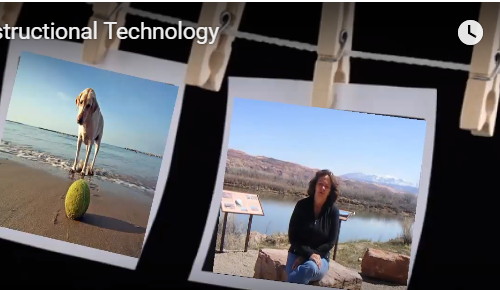Down the Rabbit Hole

Down the Rabbit Hole
As teens, we all needed validation for our actions. Especially those actions that lead to some form of academic success. The truth, if fully known, was that as a teenager, that path was often riveted with rabbit holes. Many times in the process of learning, our foot would slip and down we would go. The best thing we could hope for was a caring/forgiving teacher waiting for us at the end of that hole, to help us get back up on our feet again. We also hoped our parents would be there to support us as we tried again to master the tasks we were being asked to do.
The real teaching starts at the bottom of the hole. It begins when you have a student or group of students who have given up. Given up on education; the system that is supposed to be there for them. They have given up on attempting to better their place in society. Some have even given up on their families because the home environment is so toxic. That is where the real teaching begins. I want to put this out there: validation – kids you are worth it.
Validation – kids you are worth it
You cannot plan for a student to fail - not unless you are a monster. There is so much going on in a students world that helps contribute to the process of failing, flunking out, acting out, and not caring about how their behavior affects others. Sometimes their behavior is off the charts – but a good teacher will not react. A good teacher knows that you have to slowly bring your student(s) back up the rabbit hole. It is okay if you spend a little extra of your time to help them dig out – those kids need your time. That is what they are missing “time”.
That is what they are missing “ time”.
With time comes consistency. With consistency comes knowledge. Each student will have a different perspective when it comes to learning. As with discovery learning which utilizes the techniques of a variety of instructional methods. For example: just using the basic terminology of Problem Based Learning (PBL), Discovery Learning (DL), and Inquiry Learning (IL) you have to have some type of a knowledge base for your student(s) to start from.
Direct instruction or step-by-step learning is good in many cases, but if the students already have a solid knowledge base, then a constructive learning environment with some scaffolding tools can become an effective learning environment. You have to meet your students where they are. Some are stuck in a rabbit hole, and they keep digging deeper. It is your job to help them turn back up the hole.
Not all learners will be same. A good instructor and/or designer should be open to the differences and adjust methods accordingly. You need a good knowledge base within a constructive learning environment for your students. A beginner student, can and will run into cognitive overload very quickly if they don't have a good knowledge base. That overload is subject to increase exponentially when the student has already experienced education in a negative way.

Students who have experienced overload, can and will form a pack – a disruptive pack if left to their own devices. Students will act out alone and/or together, and you will find your classroom out of control because of it.
So what can you do to help as a teacher, to stop your student from running down a rabbit hole? The first thing is to admit that you might have something to do with the problem. Once you can admit that - then you can start looking for what went right. That is the answer - what went right. When we start to examine the things that went right, no matter how small, that gives us a starting point. What went right is your strength.
I am not a collaborative learner by nature. A lot of students I know aren't either. I prefer to work from my own little sphere; minimal collaboration is best for me. But, at the same time I have learned to work with others and collaborate very well. It took time, and I didn’t change overnight, I wouldn’t expect my students to change overnight either.
Cognitive overload is such a real concern for me - but if left alone I discover what needs taken care of - and I do it. Sometimes we need to give our students time to figure out the problem(s) too. Time – it’s what it takes.
The scaffolding techniques that I use are of course - are the computer and the internet. Everything is online. I need to have access to terminology and quick reference definitions. I have to understand what I'm reading. Take for instance the three basic constructive learning models. Problem-Based Learning (PBL), Inquiry Learning and Discovery Learning. One could take a cursory look at these and assume they are the same, but they are not. Our students cannot tell the difference either, yet many instructors attempt to make them do so right off the bat. Our student, are all uniquely different. They can fall within any combination of all the learning models listed above. The can also fall down a rabbit hole.
Problem-based learning attempts to provide the learner with self-directedflexible knowledge, and fundamental incentives. The outcome of PBL is to have students learn the process and content together. Whereas, Inquiry Learning, which includes PBL, is often a facilitated approach to the investigation of problems or questions dealing with research or projects. Discovery learning utilizes the techniques of a variety of instructional methods. The learner already has a knowledge base from which to pull from, and they use that base in more of an experimental capacity to explore and manipulate data or objects.
They use that base in more of an experimental capacity to explore and manipulate data or objects
Not all environments need to be highly controlled. Minimal guidance learning environments can be just as effective, especially if given the right scaffolding tools with the student learned knowledge base.
While all the models proclaim to do basically the same thing – some models contain more built-in guidance, than the other. Direct instruction is not always best over PBL, IL or DL. Scaffolding can make tasks easier, reduce the learners cognitive load, and helps to point out complexity. A lot still depends on being able to examine the context and students whom you are working with. Each will have a different perspective.
As we begin to help our student climb back out of the rabbit hole – we need to make sure we are back-filling that hole with a strong knowledge base. Sometimes back-filling means we have to try a different approach and give it time, while examining what went right - and keep doing it.
You May Also Like

Instructional Technology & Learning Sciences- USU Alumni
October 22, 2022
Bilateral Music Stimulation – A Thousand Years
March 29, 2025